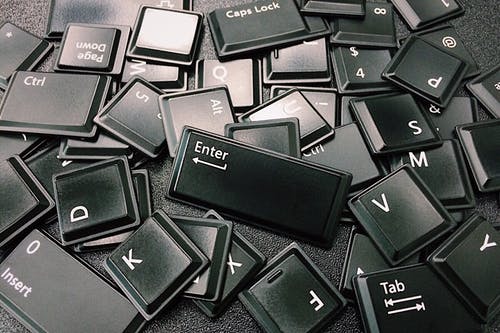
17 Online Resources to Help you Improve your English
Credible and Effective Online Resources
Learning English grammar, punctuation, spelling and vocabulary is not an easy task. Whether you want to improve your English so you can write more effectively, converse with greater clarity and accuracy, or read with deeper comprehension, here are a few websites you may wish to visit. Note that some refer to North American English grammar and language usage, while others relate to British English.
This site provides a wide range of online resources. With short, clear grammar rules and a range of exercises, it is a great site for practising your English grammar skills. It is a comprehensive site that covers every aspect of reading, writing and speaking British English. Probably one of the very best sites available.
A site loaded with tools to help you learn fundamental English through fun activities. This too, is one of the best websites when it comes to learning British English. It is the website of Cambridge Assessment English (CAE), which is part of the University of Cambridge. CAE provides the world’s leading range of qualifications and tests for learners and teachers of English.
Whether you are a beginner learning the basics or an advanced learner trying to perfect the more complex aspects of American English grammar, this site is excellent with a great range of guides and videos. It is thorough and updated regularly. You can also download lessons or do online grammar practise sessions.
Grammar Girl is both a blog and podcast that provides short, friendly tips to improve the grammar in your writing. Grammar Girl (also known as Mignon Fogarty) makes learning grammar fun and simple with memory tricks. This makes it easier to remember and use difficult grammar rules.
English Club has resources for grammar lessons, pronunciation, vocabulary, writing and many other topics. Great for beginner to intermediate levels. Some lessons have quizzes, and others have special tips that explain commonly misunderstood facts about each topic.
This site provides blog-like articles that present straightforward advice on some of the trickier points of English grammar.
One of the best sites for improving your American English grammar and punctuation. The site covers an astonishing range of topics and is highly regarded, being used by everyday people, students and academics.
A grammar website and blog written by an English language teacher. Select your grammar focus, read a description and examples, and then practise with online exercises.
This site has collected many rules, facts and tips on every possible grammar topic you can imagine. Explanations are written in a blog-like way. It’s an excellent resource for more advanced learners and is directed at native English speakers who want to improve their grammar. Therefore, the tips might be a bit overwhelming for beginner/intermediate learners.
English Grammar 101 is structured like a grammar textbook. Each easy-to-understand lesson (or chapter) only covers one topic at a time, and it is followed by an online exercise section to test your understanding of the topic.
This site specialises in English as a Second Language (ESL) and presents a large collection of tools and resources for students, teachers, learners and academics, covering the full spectrum of ESL, EFL, ESOL, and EAP subject areas.
Another site where you can select a topic, read a short description of the rules and then practise with a lot of activities. It is suitable for leaning basic English at a beginner’s level.
Grammar Bytes has mini grammar lessons and exercises presented in a friendly and even entertaining way. Interactive exercises let you test your skills, and they contain easy-to-understand explanations with the correct answers. The site also posts a daily grammar workout on its Twitter account. Its focus is on American English.
Education First offers a collection of free English learning resources. Its grammar guide is well structured and is a good starting place to learn how to use the parts of speech. The rules themselves are short and example sentences are used to show how English grammar works.
Considered to be one of the best websites for learning English as a second language. The site utilises videos and encourages you to learn through online conversations and interaction. Learning is through a four-step, web-based process.
This popular and comprehensive website presents a variety of superb learning exercises and incorporates videos, tests, vocabulary primers, crosswords, etc. It covers everything ‒ business English, conversational English, English for teachers, and so on.
While not structured very well, English Page has some of the best American English grammar exercises you’ll find online. The exercises require you to write the answers, so you apply what you’ve learned. There’s an excellent section with grammar rules as well, with many sample sentences.
Final Words
I hope you find these sites helpful as you learn, practise, improve and perfect your English. It is important to incorporate the grammar, vocabulary and spelling you are learning into all four language skills: reading, writing, listening and speaking.
Read as much well-written English as possible, listen to good-quality English broadcasts, and watch the better-type of English-language TV shows and movies (those that do not rely on slang or vulgarity) to immerse yourself in the language. And, try to engage in conversations with people who speak the type of English you aspire to.
If you need assistance with fine-tuning and polishing your written English, contact Renell on +64 29 1230 158 or renellj@proofperfect.co.nz













